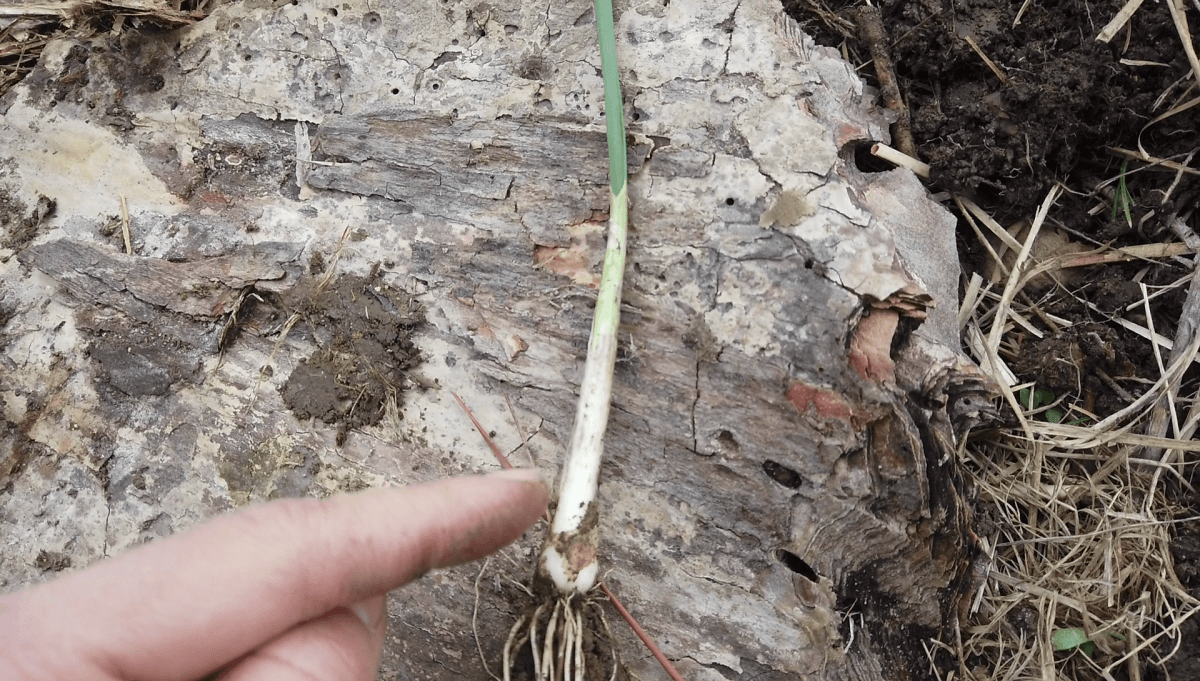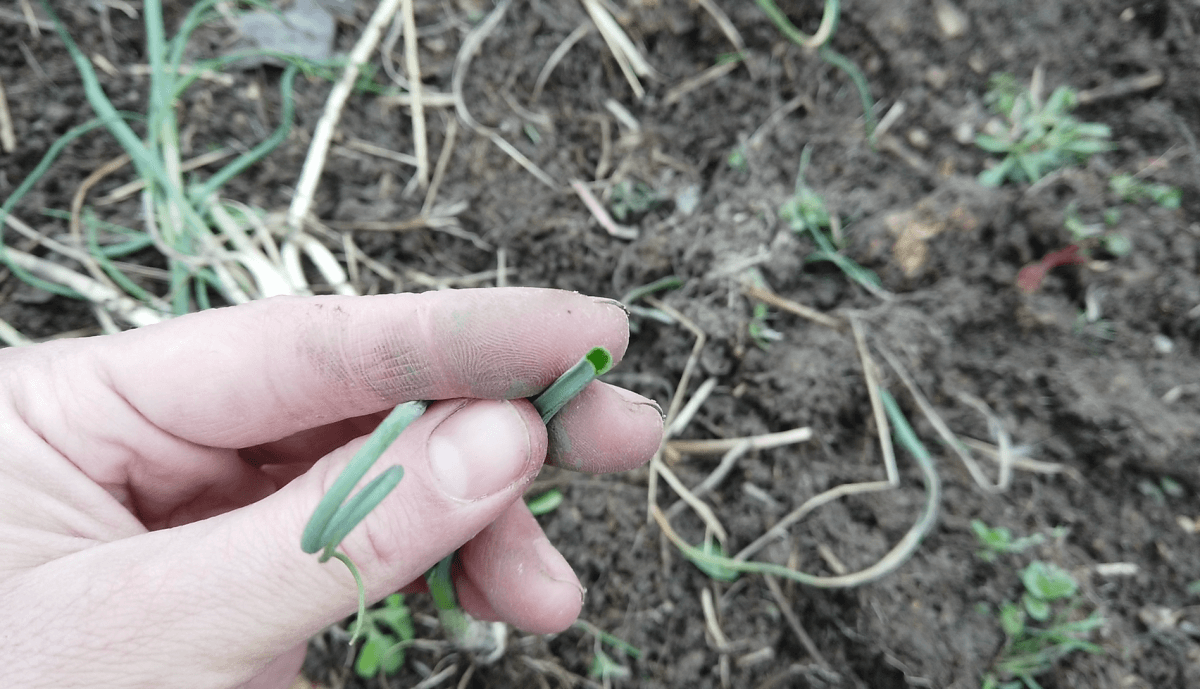Field garlic, also known as wild garlic or Allium vineale, is a delicious and versatile edible plant that can be found in many parts of the world. It has a mild garlic flavor and can be used in a variety of dishes, including soups, stews, salads, and sauces.
Is Field Garlic Safe to Eat?
Yes, field garlic is safe to eat. However, it is important to be able to identify it correctly, as there are a few poisonous plants that look similar.
How to Identify Field Garlic
Field garlic has several key characteristics that can help you identify it:
- Leaves: The leaves of field garlic are round and hollow, like those of onions. They are typically 12-18 inches tall and grow in clumps.
- Flowers: Field garlic produces small, pink or purple flowers in the summer.
- Bulbs: The bulbs of field garlic are small and white, and they have a mild garlic flavor.
Where to Find Field Garlic
Field garlic can be found in a variety of habitats, including meadows, pastures, and woodlands. It is most common in areas with moist, well-drained soil.
How to Harvest Field Garlic
The best time to harvest field garlic is in the spring, when the leaves are young and tender. To harvest the leaves, simply cut them off at the base of the plant. The bulbs can also be harvested in the spring, but they are best when they are small and white. To harvest the bulbs, dig them up carefully with a trowel.
How to Use Field Garlic
Field garlic can be used in a variety of dishes, including:
- Soups and stews: Add field garlic to soups and stews for a delicious garlic flavor.
- Salads: Use field garlic leaves in salads for a fresh, garlicky flavor.
- Sauces: Make a delicious garlic sauce by blending field garlic with olive oil, vinegar, and herbs.
- Pesto: Make a flavorful pesto by blending field garlic with basil, pine nuts, and Parmesan cheese.
Tips for Using Field Garlic
- Wash the leaves and bulbs thoroughly before using them.
- Use field garlic sparingly, as it has a strong flavor.
- Field garlic can be stored in the refrigerator for up to a week.
Conclusion
Field garlic is a delicious and versatile edible plant that can be enjoyed in a variety of dishes. By following the tips above, you can safely identify, harvest, and use field garlic in your own kitchen.
Lookalikes: Watch out for Star-of-Bethlehem!
Be aware of one significant lookalike. Star-of-Bethlehem (Ornithogalum umbellatum) is a similar-looking spring flower that you need to know (as well as you know field garlic) before you begin your spring harvest. Every part of Ornithogalum is toxic, and so it obviously shouldn’t make its way to your dinner table.

The pretty flowers that give them their name appear long before the glossy, green clusters of leaves. It is also an early-emerging, somewhat invasive plant that prefers the same kind of habitat as field garlic. The issue is that it frequently grows next to field garlic, and since it doesn’t have the same starry white blooms, it could be simple to miss it when picking your early spring greens.
Here are three ways to distinguish Star-of-Bethlehem from field garlic. To harvest securely and confidently, make sure to use all three simultaneously.
Smell: One simple method to tell different plants apart is by their distinct lack of the allium family’s onion scent, which Star-of-Bethlehem notably lacks. But this provides compelling evidence against picking random handfuls while out in the field. A few Ornithogalum leaves could easily blend in among field garlic leaves that smell like onions.
Observation: Unlike field garlic, which has hollow leaves like straws, Ornithogalum leaves are solid blades with a u-shaped cross-section that are filled with a sticky sap.

Bulb: The leaves of field garlic begin dark green and eventually turn white as they converge to form the bulb. Additionally, field garlic leaves are sheathed over each other. The leaves of Ornithogalum remain a uniform bright green color until they reach the root, where they abruptly come together to form a white bulb. Additionally, the leaves do not sheathe one inside the other.
Finding and Identifying Field Garlic
Allium vineale, sometimes called field garlic (or confusingly called wild onion, onion grass, crow garlic, or wild garlic) is a common plant found in much of the eastern United States and along the western coast. Since it easily hitches a ride in fill dirt, however, it can also be found in many places outside its normal range. It thrives in sunny areas and can be found in lawns, pastures, vacant plots, and parks. You’ll likely never find it in the forest or in really old fields succumbing to forest succession.
Of all the plants in the onion family known as wild alliums, field garlic is undoubtedly the most productive. It’s called “field” garlic, and indeed, it is found in fields, but it could just as easily be called “next to the path” or “I just weeded that lettuce, how is it there???” garlic because it’s so ubiquitous. Its persistent growth habit is an indicator that this plant is an invasive non-native species. While some of our native alliums, like ramps (Allium tricoccum) and the similarly named wild garlic (Allium canadense), can occasionally form large colonies on their own, you won’t usually find them in a lawn or pasture.
Garlic is frequently the first plant to turn green in the early spring in what was probably a region of dried brown grasses. Although it may initially resemble grass, the earliest growth frequently has curlicues that resemble wonderlands. Additionally, if you look more closely at a clump of it, you’ll quickly notice that each leaf is a unique round tube that resembles straw rather than a grass blade. These leaves, like those of all other members of the onion family, smell strongly and uniquely of onions when broken.

The first spring leaves are the most tender. The plants will become taller and more erect as spring gives way to summer, typically reaching past your knees. By this point, they will be much tougher in texture. They yield an edible, pinkish flower that, when fertilized, turns into an odd cluster of bulblets with bitty leaves. The secret to field garlic’s successful widespread distribution is that it gets so heavy that it falls back to the ground and ends up planting an entire clump for the following year.
A white bulb, typically firmly rooted, is growing a few inches below the surface of the earth beneath all that upper growth. It is incredibly tiny compared to a garlic bulb and tastes delicious. Normally, at this point in our discussion about wild bulbs, I would warn you against overharvesting and urge you to leave the bulbs in place. Field garlic is invasive, so even if you tried to eradicate it during harvesting, there’s little chance you’d succeed. Harvesting the bulb often loosens tiny side-grown bulblets and leaves them behind to grow next year.
Nevertheless, the flavor of the leaves and roots is essentially the same—it’s wonderful and garlicky. In order to harvest in an environmentally friendly manner, or if you are harvesting on someone else’s property and they do not want you to dig, you can simply pull the leaves off of the deeply rooted bulbs without damaging the roots.
Related Post: Foraging for Pokeweed
How To Forage Wild Garlic – Identification, Health Benefits & Mythology
Can you eat wild garlic?
We’ve reached the best part. Cooking with wild garlic is so easy. With just a few exceptions, you use wild garlic in the same ways as you would the common bulb garlic. You can also eat the entire plant, including the leaves, flowers, stems and the small root bulb that forms underground late in the growing season.
Is cooked garlic good for you?
Cooked garlic has the same health benefits as raw garlic, such as reducing high blood pressure and cholesterol levels, promotes cancer prevention, has antibiotic properties and prevents Alzheimer’s and dementia.
What to eat with wild garlic?
Mix wild garlic with feta and wrap with buttered phyllo pastry to make Turkish boreks. Mix gently roasted tomatoes with a handful of wild garlic and a good drizzle of olive oil. Serve over most any fish. Make an herb potato salad with dill, chives and minced wild garlic
Is wild garlic edible?
The above ground parts of wild garlic are more sustainably harvested. Wild garlic flowers are edible, and very pretty, with pink/purple petals. Flowers are usually followed by bulbils (small bulbs), and sometimes bulbils grow instead of flowers.
